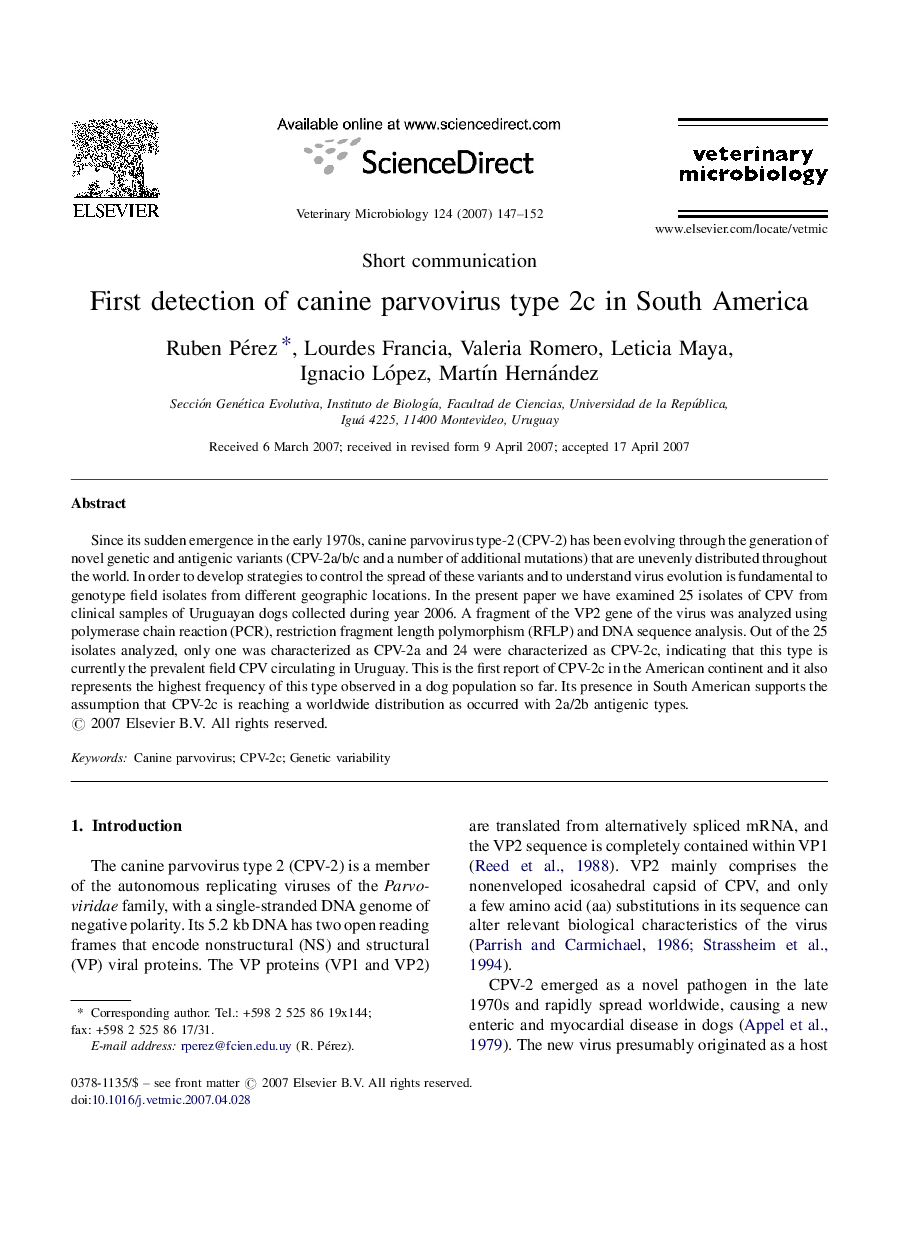| Article ID | Journal | Published Year | Pages | File Type |
|---|---|---|---|---|
| 2469230 | Veterinary Microbiology | 2007 | 6 Pages |
Since its sudden emergence in the early 1970s, canine parvovirus type-2 (CPV-2) has been evolving through the generation of novel genetic and antigenic variants (CPV-2a/b/c and a number of additional mutations) that are unevenly distributed throughout the world. In order to develop strategies to control the spread of these variants and to understand virus evolution is fundamental to genotype field isolates from different geographic locations. In the present paper we have examined 25 isolates of CPV from clinical samples of Uruguayan dogs collected during year 2006. A fragment of the VP2 gene of the virus was analyzed using polymerase chain reaction (PCR), restriction fragment length polymorphism (RFLP) and DNA sequence analysis. Out of the 25 isolates analyzed, only one was characterized as CPV-2a and 24 were characterized as CPV-2c, indicating that this type is currently the prevalent field CPV circulating in Uruguay. This is the first report of CPV-2c in the American continent and it also represents the highest frequency of this type observed in a dog population so far. Its presence in South American supports the assumption that CPV-2c is reaching a worldwide distribution as occurred with 2a/2b antigenic types.
